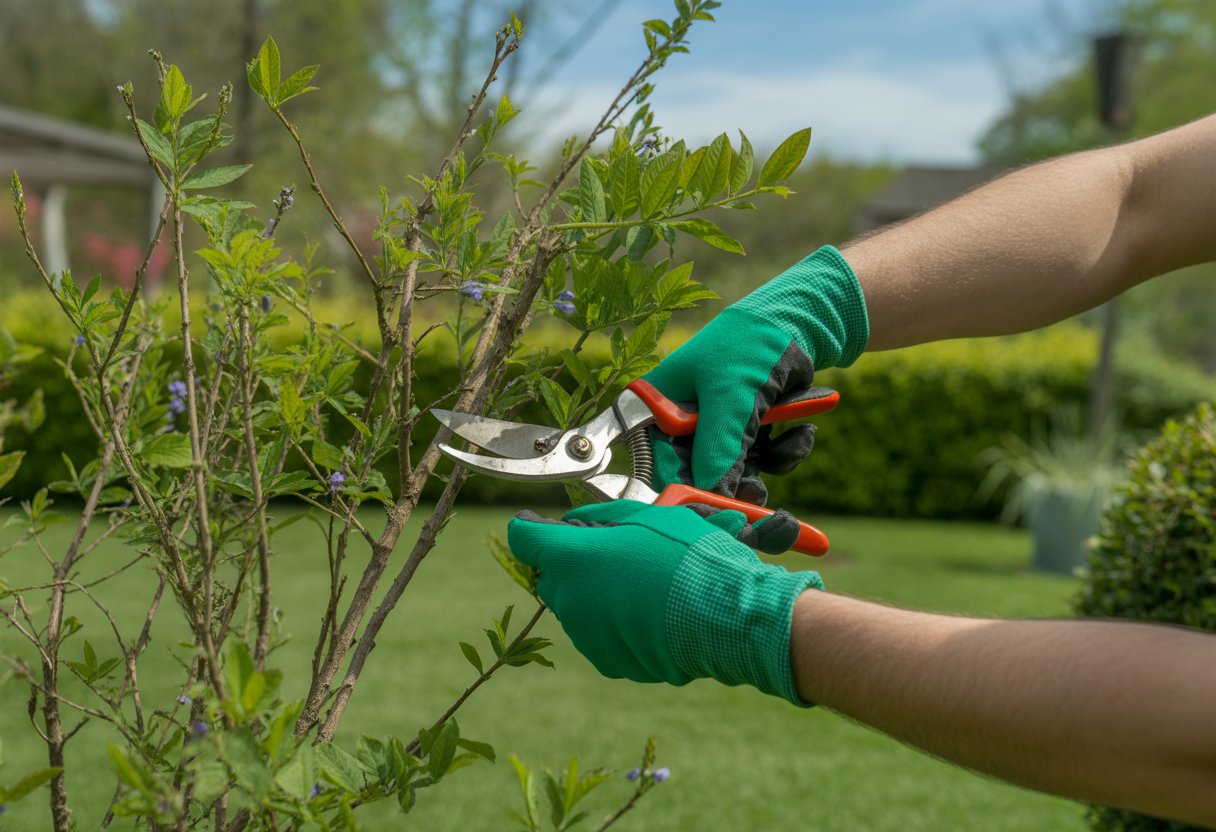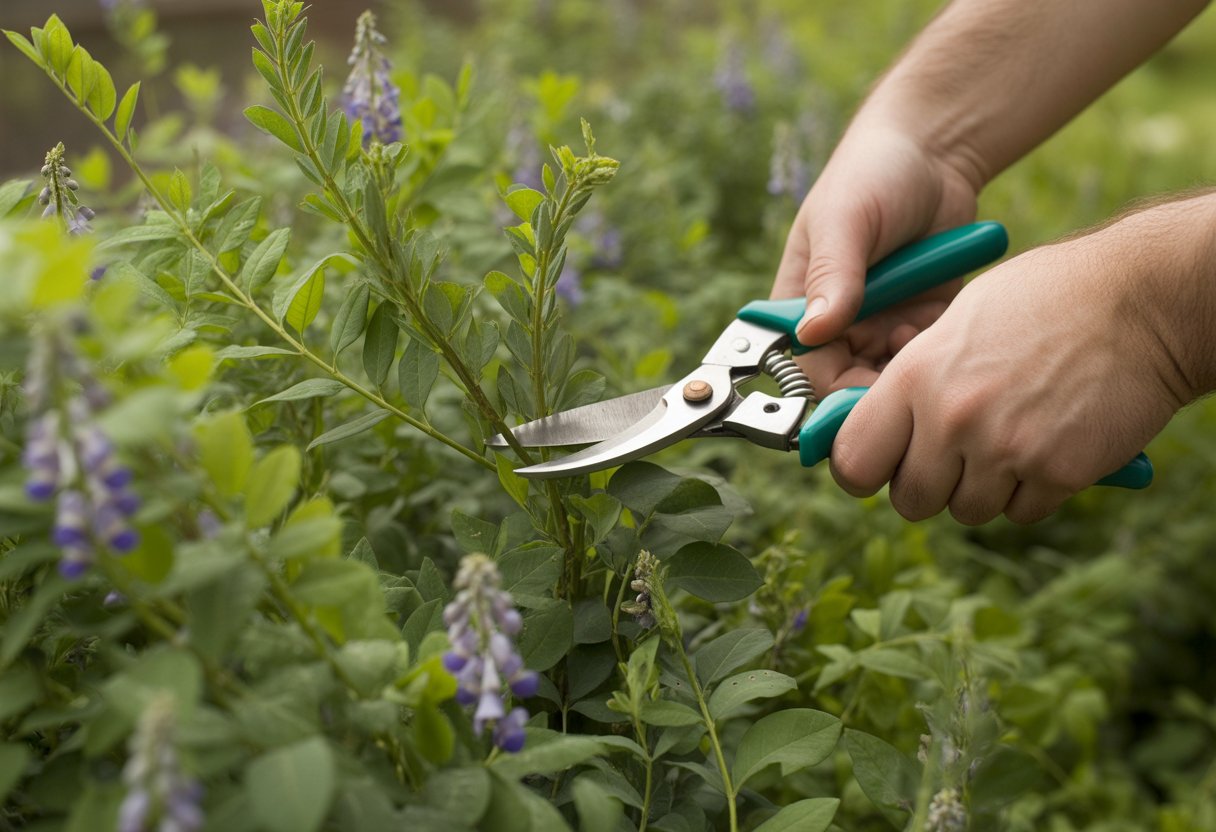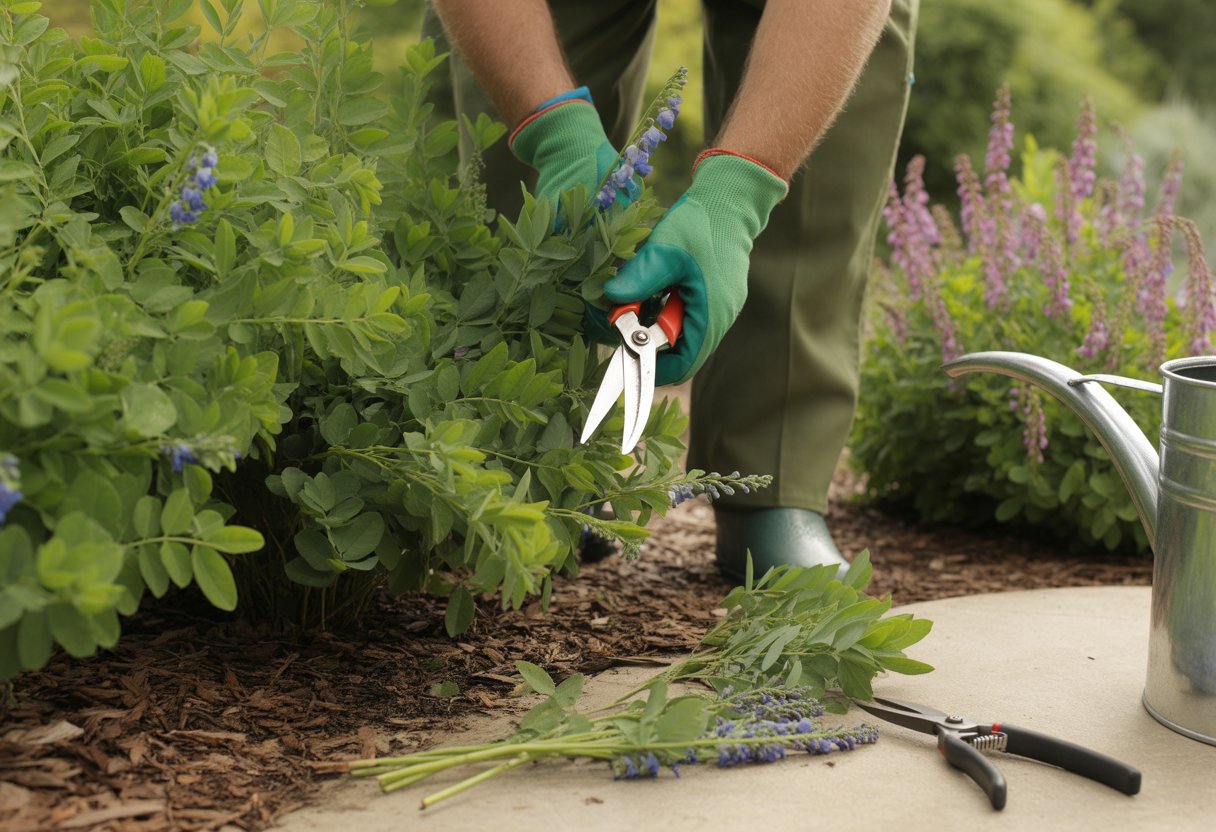How to Prune False Indigo for Healthy Growth and Maximum Bloom
Pruning false indigo keeps the plant in shape and gives it a better shot at healthy growth. The best time? Late winter or early spring—just cut those stems back to about 6 inches above the ground.
Doing this helps the plant push out strong new shoots and usually means more flowers, too.

Snip away dead or damaged stems after it blooms to keep things tidy. Regular pruning stops false indigo from turning into a wild mess, so it stays a real standout in the garden.
Understanding False Indigo
False indigo is a North American native wildflower. People love it for its tough growth and those eye-catching flowers.
It’s a perennial that sticks around for years and doesn’t ask for much once it’s settled in.
Identifying Common Varieties
False indigo is part of the Baptisia genus. The two you’ll see most often are Blue False Indigo (Baptisia australis) and White False Indigo (Baptisia alba).
Blue False Indigo gives you deep blue or violet blooms on tall stems, sometimes reaching up to 4 feet. The trifoliate leaves are a bit fuzzy, which is kind of charming.
White False Indigo has creamy white flowers and similar leaves, though it usually stays a little shorter. Both types make seed pods that look like pea pods—easy to spot even when they’re not blooming.
These plants like full sun and soil that drains well. If you’re into native or low-fuss gardens, they’re a solid pick.
Growth Habits and Lifespan
False indigo dies back to the ground every winter, then bounces back fast in spring. By early summer, you’ll see thick, woody stems shooting up.
It sticks around for a decade or more and doesn’t need replanting. The plant grows in clumps and spreads out slowly with root suckers.
Once it’s established, it handles drought without a fuss and shrugs off most pests and diseases. I’d say it’s a great choice if you want something sturdy and low-maintenance.
When and Why to Prune False Indigo
If you want your false indigo to look good and stay healthy, timing your pruning matters. Knowing when to cut can really boost flowering and keep the plant going strong.
Optimal Timing for Pruning
Grab your shears in early spring, before new growth starts. That’s when you’ll get the best, strongest stems for all those late spring and early summer flowers.
Skip summer pruning—if you cut then, you’ll lose blooms, and honestly, that’s the best part of the plant.
You can do a little cleanup after it flowers, but don’t go overboard. If you prune too late in the season, the plant might not bounce back as well next year.
Reasons for Pruning
Pruning keeps the plant from getting too tall or floppy. If you remove old or dead wood, you’ll get better airflow, which means fewer diseases.
Fresh growth leads to more flowers, which is kind of the point, right? Since false indigo doesn’t need much water, you don’t have to prune it constantly—just enough to keep it looking balanced and inviting for butterflies.
Techniques for Pruning False Indigo

Pruning helps false indigo grow strong and bloom well. The main tricks? Cut back old stems, remove spent flowers, and keep the plant from taking over.
Sunlight and soil matter, too—don’t ignore those.
Basic Pruning Steps
In early spring, before new growth pops up, cut last year’s stems down to about 6 inches. This helps shape the plant and encourages fresh shoots.
Use sharp, clean shears for each cut. That way, you’re less likely to spread disease.
Don’t do heavy pruning in the fall—it can make the plant more vulnerable in winter. If you like, toss on a little fertilizer after pruning, especially if your soil isn’t great. It’s not a must, but it can help.
Deadheading for Continued Bloom
Deadheading means snipping off flowers once they fade. Just cut the seed pods or flower stalks above a set of leaves or side buds.
This stops the plant from putting energy into seeds and nudges it to make more blooms. It also keeps self-seeding in check, so you don’t end up with a surprise forest.
If you’ve got false indigo mixed in with coreopsis or other perennials, deadheading helps everything look neat.
Managing Overgrown Plants
Sometimes false indigo gets a bit wild or woody. Every 3-4 years, cut back the oldest, thickest stems right at ground level to give it a fresh start.
If the plant’s outgrown its spot, you might have to move it. When transplanting, trim the roots and shoots a bit to help it recover.
Overgrown plants block airflow and don’t flower as much. Pruning opens things up and makes room for other perennials.
Post-Pruning Care and Uses

A little care after pruning goes a long way for false indigo. If you’re into crafts, the seed pods can make cool decorations.
Encouraging Healthy Regrowth
After pruning, give the plant a good drink to ease the shock. Keep the soil moist—but not soggy—while it recovers.
A balanced, slow-release fertilizer helps new shoots and roots get going. Snipping off dead or diseased bits while you prune improves airflow and keeps pests down.
Mulch around the base to hold in moisture and even out soil temperature. Don’t prune heavily late in the year, or the plant might not toughen up enough for winter.
Utilizing Seed Pods in Arrangements
False indigo makes these cool, inflated seed pods that really stand out in dried flower arrangements. Wait until the pods turn dry and brown, but snag them before they split open.
Snip the pods off with a couple inches of stem left—it just makes arranging so much easier. These pods keep their shape and color surprisingly well once dried, adding a natural vibe to any bouquet.
Try mixing them with dried flowers like lavender or wheat. I usually stash my seed pods in a cool, dry spot until I’m ready to use them, just to avoid any mold or brittleness.
